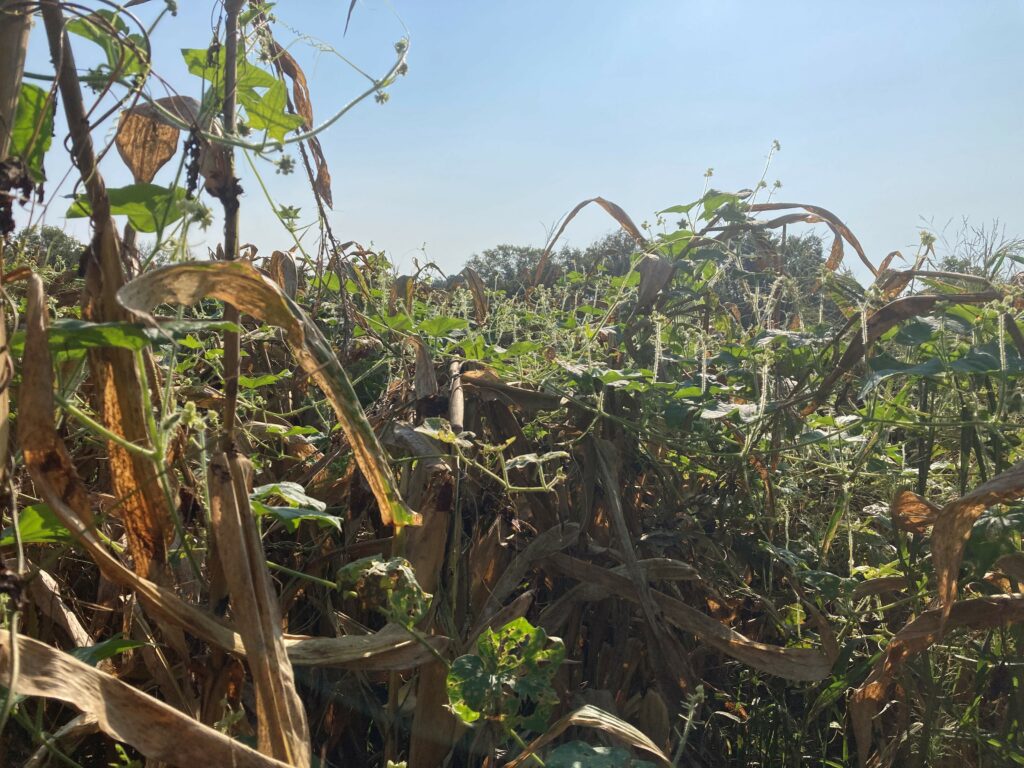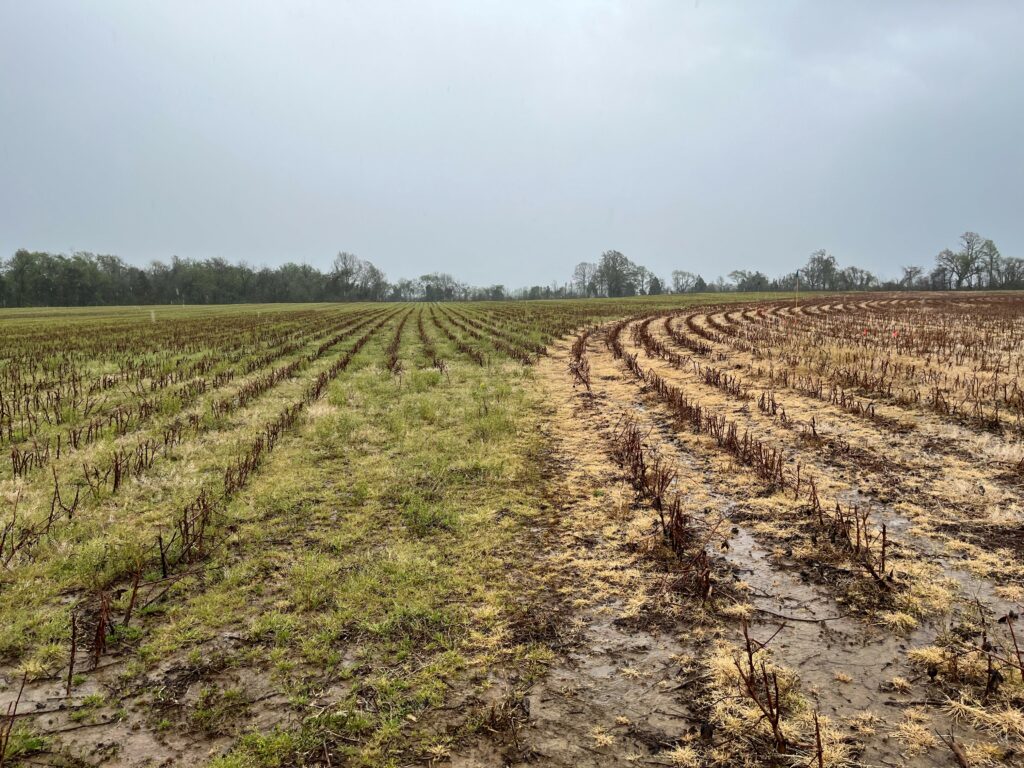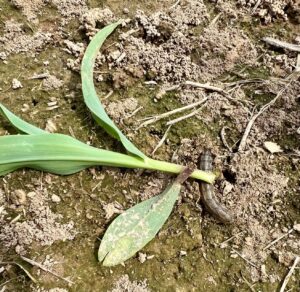Soybean replanting decisions are almost always a tough call and a subjective decision. In 2023, favorable planting conditions in late March and early April have resulted in quite a few acres being planted. As we head into the month of May, let’s take a look at some objective factors that can help inform replant decisions. Continue reading
Category Archives: Corn
Mitigating Potential Herbicide Mixing Issues
This time of year as we move to burndown behind the planter we typically get some reports of mixing issues when either glyphosate or Gramoxone is added to the tank with residual herbicides like atrazine, metribuzin, Cotoran, Caparol, fomesafen or a pyroxasulfone containing product. What happens is the white herbicides will often clabber up and stop up screens and strainers in the sprayer. Continue reading
Thinking ahead: Vine Control in Corn

Practically every September some growers are dismayed at the vine infestations present at corn harvest. Often, these weed infestations emerged after PRE applied or early POST applied herbicides had played out. They grew very little until August and as the corn dried down and light became more available those established weeds started rapidly growing. Continue reading
Ryegrass Management in Corn
There were a number of reports of ryegrass escaping burndown in fields that either will soon be planted to corn or just had been planted to corn. Thankfully this issue seems less of a problem than a year ago. In most cases the ryegrass escaped glyphosate + dicamba early burndown. Paraquat application has the best probability of controlling ryegrass that has escaped early burndown. Continue reading
Application Time of Day Affects Gramoxone Performance on Some Weeds
With the planting season started, many people are thinking about using Gramoxone (paraquat) as a burndown for many weeds present at planting. Gramoxone is a very good broad-spectrum herbicide that has been the go to for burndown of many winter and summer annual broadleaf weeds. With Palmer amaranth starting to emerge, Gramoxone is the only sure thing that will control it. However, it is less consistent controlling some weeds like horseweed (marestail). Continue reading
Early Burndown Results

We have had the opportunity to observe field and demo burndowns around West Tennessee. In general, going back “old school” and applying glyphosate alone provided very effective burndown. This includes applications made back in mid-March when night time temperatures were below freezing (Picture 1). Continue reading
Early Planting and Growing Degree Days
As warmer temperatures creep into the forecast each spring, farmers and researchers alike begin to consider just how soon to pull the trigger and put seed into the ground. While these early planting dates may fall slightly outside of what is considered nominal for corn and soybean, certain situations may still provide growers a window of opportunity for early planting. Continue reading
Breaking the Green Bridge
As general rule, no-till production increases the risks from pests including slugs, cutworm, threecornered alfalfa hopper and several below ground pests such as wireworm and southern corn rootworm. Tillage is not an option in most of Tennessee’s agricultural landscape. This leads entomologists to recommend spring “burndown” applications 4 weeks in advance of planting. The goal is to “break the green bridge” or eliminate alternative hosts (weeds, cover crops) well before planting the cash crop.
However, making burndown applications 4 weeks prior to planting isn’t always possible or it doesn’t align with the goals of having cover crops. One way to help mitigate potential insect issues in late burndown is to add a pyrethroid insecticide with your herbicide application or within 7 days of planting. Beware blooming and pollinator attractive cover crops (vetch, brassica species) may have foraging honey bees and pyrethroids should not be utilized until the plants are not longer attractive to pollinators (desiccated or senescing from herbicides).
Utilizing insecticide seed treatments will offer protection against pest insects that may feed on your cash crop. If you are planting green (not burning down cover crops until after planting) I highly recommend a robust insecticide seed treatment and a pyrethroid insecticide that is included with the burndown herbicide. In corn this would be Poncho 500 or 1250, in soybeans Gaucho or Cruiser treated seed and in cotton Gaucho or Aeris based treatments will offer adequate protection from most below ground and some above ground pests. Keep in mind, seed treatment residual activity is strongly influenced by environmental factors, plant growth and amount of AI on the seed.

Cutworms in corn and cotton are uncommon but can be a serious pest. Pyrethroid applications within a week of planting will significantly reduce the risks of cutworm issues at low cost. Insecticide seed treatments are normally not enough to control cutworms and Bt traits in corn and cotton can offer mixed results depending on the traits. Three gene corn and cotton (those that include the Vip trait) provide better cutworm control than dual gene corn and cotton (V2TP, BG2 etc).
Overall, I like to see farmers planting in grave yard dead fields of weeds or cover crops but that isn’t always the case. Providing protection for your cash crop, at a relatively low expense, may help avoid the painful and costly decision to replant.

